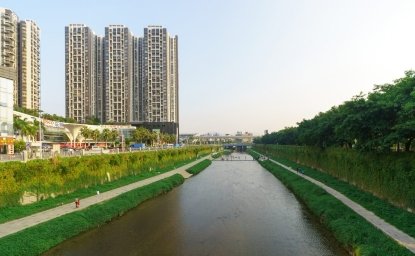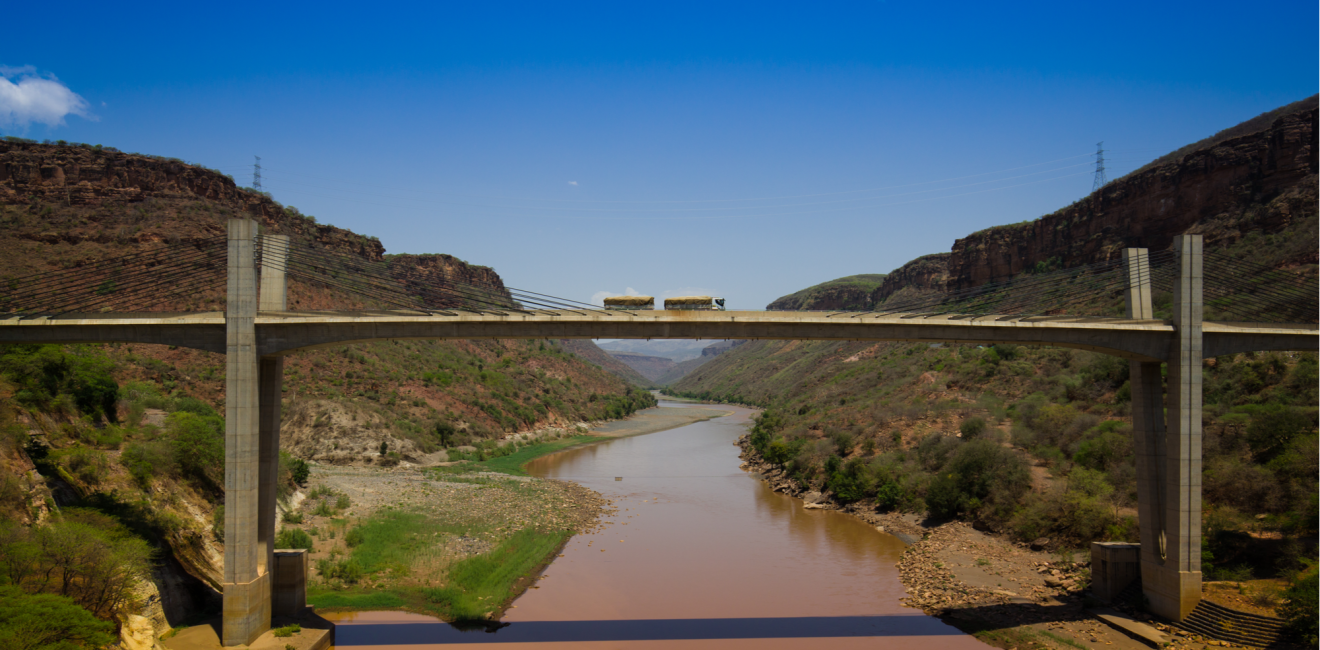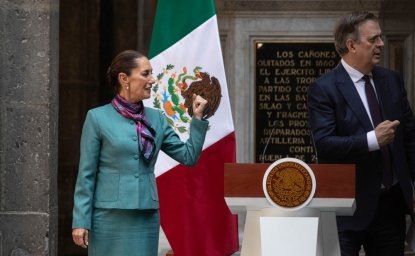The conflict between Egypt and Sudan on one side and Ethiopia on the other has been simmering for ten years, since Ethiopia started construction of the Great Ethiopian Renaissance Dam (GERD) on the Blue Nile in 2011. The Blue Nile (or Abay River to Ethiopians) contributes 85 percent of the water reaching Egypt, because much of that draining from central Africa into the White Nile evaporates in the Sudd swamps. Egypt is thus terrified that the dam will lead to a serious decline in the amount of available water and has convinced Sudan, which originally accepted the project, to take its side in the dispute. The main conflict, however, remains that between Egypt and Ethiopia and while Sudan participates, it does so in the shadows, and often at the behest of Egypt. Thus, I will discuss Egypt much more than Sudan.
At a time when the country’s stability is badly shaken by conflict among different ethnic groups, the dam, financed domestically with the help of contributions by individual citizens, could become a symbol of common purpose and national pride.
The project has enormous economic and political implications for both Ethiopia and Egypt. Ethiopia sees the dam as indispensable to its economic development. As the largest hydropower project in Africa, the GERD will produce enough electricity for domestic consumption, with a sizeable amount for export as well. And at a time when the country’s stability is badly shaken by conflict among different ethnic groups, the dam, financed domestically with the help of contributions by individual citizens, could become a symbol of common purpose and national pride. For Egypt, decreased water availability would be an economic disaster, particularly at a time when water shortage already looms because of uncontrolled population growth and wasteful irrigation practices. Politically, too, the military regime that rules Ethiopia is anxious to project an image of strength.
The situation is about to reach a boiling point in a matter of days, as soon as the heavy summer rains start on the Ethiopian highland, triggering the second filling of the reservoir. This should allow Ethiopia to install some centrifuges and start generating electricity. But Egypt and Sudan still insist that Ethiopia has no right to impede the free flow of water without having reached a binding agreement with downstream countries on the speed at which the reservoir will be filled and how water will be apportioned in the future, particularly during drought years.
Years of negotiations have proven elusive and so have attempted mediation efforts. The Trump Administration tried, but Ethiopia walked out on a draft proposal it considered biased in favor of Egypt. The African Union has also tried to mediate twice. The first attempt, carried out when South Africa controlled the rotating presidency of the regional organization, was declared a failure in January 2021. In April, when the presidency of the African Union was transferred to the Democratic Republic of Congo, efforts resumed, also without success. In the meantime, Egypt insists that mediation efforts should be much broader, to also include the United States, the European Union, and the United Nations, a position rejected by Ethiopia. Egypt has also turned to the League of Arab States, which in June issued a resolution supporting the position of Egypt and Sudan. Sudan, at the instigation of Egypt, has also asked for the intervention of the United Nations Security Council on the ground that the dam is a threat to international security. As the parties squabble, the rains are imminent and so is the second filling of the GERD reservoir. Egypt’s threat to use force to stop this from happening is unlikely to be carried out, given both the logistical difficulties and the international outcry such action would provoke.
Three major factors hamper a resolution of the problem. The first is the intransigence of Egypt and Ethiopia, both of which consider the use of Nile water to be a vital interest. The second issue is a legacy of colonial era and later treaties from which Ethiopia was excluded and thus it does not accept, but which Egypt insists should respected. Conversely, Egypt and the Sudan have refused to sign an agreement negotiated by all other countries in the river basin in the early 2000s in order to regulate the use of the river. The third obstacle is the absence of international laws or any other enforceable agreement concerning international rivers that, like the Nile, cross international borders.
Egypt’s intransigence has been encouraged by a 1929 treaty with Britain, which recognized Egypt’s rights to the lion share of Nile water, with a small amount going to Sudan. The treaty also gave Egypt veto power over projects upstream, without even mentioning Ethiopia or the White Nile riparian countries, although Britain, as the colonial power, supposedly represented them. In 1959, Egypt and the newly independent Sudan negotiated between themselves a new agreement that gave Sudan a somewhat larger share of the water. Egypt insists that both agreements are still valid.
The fact that all countries that have accepted the framework agreement are African explains Egypt’s reluctance to accept the African Union as the sole mediator in its conflict with Ethiopia.
In an attempt to remedy what is clearly an absurd situation for the 21st century, beginning in the late 1990s the countries of the Nile basin, encouraged by the World Bank, negotiated a Cooperative Framework Agreement establishing basic principles that should regulate the use of Nile Water. The agreement was reached in 2010. By 2019, ten countries in the Nile basin had ratified it, with only Egypt and Sudan rejecting it and insisting on the validity of previous treaties. The fact that all countries that have accepted the framework agreement are African explains Egypt’s reluctance to accept the African Union as the sole mediator in its conflict with Ethiopia.
Ethiopia’s refusal to accept the 1929 and 1959 treaties and Egypt’s and Sudan’s rejection of the Cooperative Framework mean that the three countries cannot turn to mutually acceptable agreements in trying to settle the new conflict arising from Ethiopia’s decision to make use of the water that originates in its highlands, for the first time in its history.
Nor can they turn to an accepted body of international laws or conventions regulating the use of water in international rivers. Several attempts have been made to reach an agreement on the issue, but with little success. The few widely accepted principles are too vague to be useful in settling a dispute—there is widespread agreement that water of international rivers should be shared equitably among riparian countries—unfortunately, in specific cases equity is very much in the eye of the beholder.
In 1966, the International Law Association issued the “Rules on Uses of Water of International Rivers” in Helsinki, but the document never got any traction. In 1997, the United Nations drafted a convention on the “Law of Non-navigational Uses of International Water Courses." It went into effect in 2014 after 35 countries, but not the ones most directly involved, signed it and thus had limited impact. In 2004, the International Law Association issued a new set of rules, known as the Berlin Rules on Water Resources, again with little success. None of these documents has really helped settle the problem or even offered clear guidelines for negotiators.
Further complicating the matter and in many ways distracting attention from the problem of who has the right to the water of international rivers, is opposition to the construction of large dams mounted during the 1990s which led to the setting up of the World Commission on Dams between 1997 and 2001. In the eyes of their opponents, large dams cause serious environmental problems, have negative social effects by displacing populations flooded out by the filling of the reservoirs and they usually do not have the expected economic pay-offs. Further, the goals they are designed to serve can be accomplished in less expensive and destructive manners. This is not the place to discuss the merits of these claims. Suffice to say that the report of the commission was influential among others in convincing the World Bank to withdraw its support for large dams, and in general by generating much more interest on the rights of displaced populations as well as on environmental consequences. It did little, however, to stop the building of large dams or regulating their construction on international rivers. In the dispute over Egypt and Ethiopia over the GERD, the Commission’s report offer no guidelines.
The agreement is the result of negotiations between the countries involved, rather than of the application of international norms.
In the meantime, countries have been going ahead building dams on their own territory with little concern for the consequences downstream. While there are examples of successful agreements on the sharing of water of international rivers—sworn enemies India and Pakistan have had an agreement on the sharing of the water of the Indus River since 1960, for example. The agreement is the result of negotiations between the countries involved, rather than of the application of international norms.
In the Middle East, where arid conditions make water particularly valuable, the building of dams has continued without international agreements. It is worth considering what has happened on the Euphrates and Tigris Rivers, both of which originate in Turkey and flow, respectively, through Syria and Iraq, and through Iraq alone. The story of those dams shows that problem with the GERD is far from unique and that the international community has generally refrained from intervening. As a result, Turkey as the upstream country has benefited from the two rivers to the detriment of Syria and Iraq. But Syria, too, has built dams on the Euphrates, worsening water shortages in Iraq.
In all cases, the international community reacted negatively to the building of the dams, although mostly due to concerns regarding the impact on the environment and the rights of the people displaced by the filling of the reservoirs rather than the impact on downstream countries. The exclusive focus on downstream countries in the discussions of the GERD appears to be exceptional, the result of Egypt’s efforts.
Turkey started talking of building dams on the two rivers in the 1930s, as the independent Turkish state that managed to rise from the collapse of the Ottoman empire and the British and French attempts to partition it, commissioned studies on the possibility of building the Keban Dam. Construction only started in 1966 and was completed in 1974, when the filling of the reservoir started, initially cutting off most of the water flowing downstream. Turkey was forced to negotiate with Syria and Iraq and to agree to a Joint Technical Committee on Regional Water--the need for such a committee had been already discussed in the Lausanne Treaty that recognized the independence of Turkey in 1923 and established its borders. The technical committee did not solve the problem once and for all and eventually Saudi Arabia tried to mediate among the three countries. One of the difficulties of establishing rules to apportion the water of international rivers is that the flow is not consistent but varies with the amount of rainfall.
Nevertheless, the project was criticized in several European countries for violations of the human rights of the affected population and for its disregard for environmental consequences.
Turkey had more ambitious plans and it started working seriously on them during the 1980s. By that time, the building of large dams was under greater international scrutiny, though not control. Thus, in the late 1980s, Turkey set up a special administration for the Southern Anatolia Project (GAP), an ambitious project that included a complex of dams, hydroelectric power plants and irrigation projects. The GAP administration paid more attention to the impact of the project on living standards of the affected people. Nevertheless, the project was criticized in several European countries for violations of the human rights of the affected population and for its disregard for environmental consequences. Many foreign entities involved in the construction and financing of various parts of the project withdrew as a result. This did not stop construction—from the late 1980s and to the late 2010s, Turkey built 14 dams in the Euphrates basin and eight in the Tigris basin.
Concern about the greatly reduced water flow downstream appears to have elicited less international condemnation than the rights of displaced populations and the effect on the environment. The issue was kept alive by Syria and Iraq—although Syria also contributed to Iraq’s problem by building three dams on the Euphrates between the 1970s and 2000. But no country or international organization went beyond generic statements about the need for all countries to share water equitably. Egypt has been much more successful in calling attention to its potential future plight than Iraq to a situation that already exists.
The lesson for Ethiopia and Egypt from these examples, as well as from the failure of all international agreements on international rivers thus far, is that the solution of the dispute is in their own hands—as Acting Assistant Secretary of State for Africa Robert Godec declared while testifying in Congress on June 28, 2021. There were technical solutions to the speed of filling the reservoir and the amounts of water to be released, he pointed out, but the political will to reach an agreement was missing. Various technical committees, countries and international organizations have suggested compromises in the past and may do so in the future, but ultimately the outcome is in the hands of Egypt and Ethiopia.
The second lesson, more difficult for Egypt to accept, is that water flows downstream and consequently the upstream country has disproportionate power on the outcome. Egypt’s saber rattling is an attempt to negate this simple fact. If Egypt were to use force, it would cause much disruption without reversing the water flow.
The views expressed in these articles are those of the author and do not reflect an official position of the Wilson Center.
An earlier version of this article stated that the UN convention on the “Law of Non-navigational Uses of International Water Courses" never went into effect. It in fact went into effect in 2014 with 35 signatories.
This article was updated at 11:20 am EDT on July 7, 2021
Author
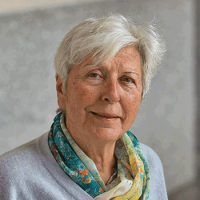
Former Senior Research Associate and Head of the Middle East Program, Carnegie Endowment for International Peace

Middle East Program
The Wilson Center’s Middle East Program serves as a crucial resource for the policymaking community and beyond, providing analyses and research that helps inform US foreign policymaking, stimulates public debate, and expands knowledge about issues in the wider Middle East and North Africa (MENA) region. Read more


Africa Program
The Africa Program works to address the most critical issues facing Africa and US-Africa relations, build mutually beneficial US-Africa relations, and enhance knowledge and understanding about Africa in the United States. The Program achieves its mission through in-depth research and analyses, public discussion, working groups, and briefings that bring together policymakers, practitioners, and subject matter experts to analyze and offer practical options for tackling key challenges in Africa and in US-Africa relations. Read more

Explore More
Browse Insights & Analysis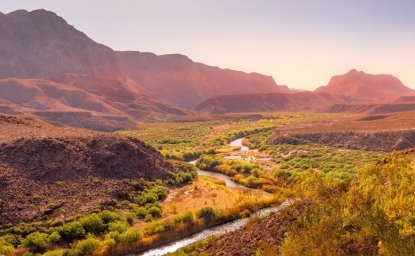
Water Security at the US-Mexico Border | Part 1: Background
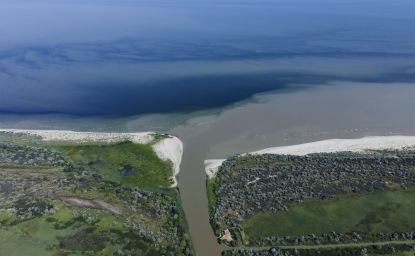
Harnessing the Benefits of Water Cooperation in an Increasingly Complex World
